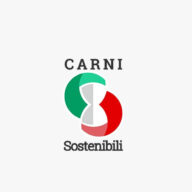
Environmental impact: comparing different diets
The way we feed ourselves has inevitably consequences on the environment, positive or negative. According to FAO, the most sustainable diets are the ones which have both a low environmental impact (respecting biodiversity and ecosystems) and are also nutritionally adequate, contributing to food safety and a healthy lifestyle. Let´s see which are the most sustainable diets for both the environment and our health.
To meet the constantly growing population´s nutritional requirements, food systems must be oriented towards greater resource consumption efficiency and the consumption of food with low water footprint, carbon footprint, ecological footprint and nitrogen footprint (nitrogen released in the environment), promoting food biodiversity and traditional and local foods.
Comparing the carbon footprint (kg of carbon dioxide emitted per kg of product), the water footprint (liter of water consumed per kg of product) and the ecological footprint (squared meters per kg of product) of the Mediterranean Diet with those of a high-protein diet, we can see that the Mediterranean Diet has a significantly lower impact (click to enlarge the table).
Source: sinu.it
However, it is very complicated to measure the actual effects of the food on the environment, since they vary a lot depending on the location, and there are several critical points. For example, the idea of “water footprint” has gradually improved, leading to the conclusion that the known fact according to which “15,000 liters of water are needed to produce one kg of meat” should be resized.
To get more realistic estimates, different variables should be taken into account, such as the type of breeding, the geographical area of production and the impact of the different types of water, namely green water (evaporated rainwater), blue water (water picked up by the aquifer or watercourses) and gray water (water required to purify potentially polluted water).
This is important because when we talk superficially about “water consumption”, we really need to consider that the biggest contribution comes from the green water, which is water that will return into circulation in the atmosphere. Also, in rainy countries, the impact on water availability will be even lower because less irrigated water is needed (and therefore less blue water, which is the one that contributes the most to the phenomenon of water scarcity). Globally, to produce one kilogram of meat, only 4% of blue water is needed, while 94% is from renewable green water and does not impact.
The same for the carbon footprint, no longer evaluated in absolute terms, but on the basis of the quantities of food actually consumed within a proper and balanced diet such as the Mediterranean Diet. Thus, high-protein foods (meat, fish, eggs, legumes, cold meats) have the same levels of carbon footprint of that produced by vegetable foods (fruits, vegetables).
The scientific validity of these concepts and the Environmental Hourglass model developed by “Sustainable Meats” have been recognized by the prestigious scientific and environmental journal “Science of the Total Environment”, which graphically shows that in a balanced diet, the different categories of food almost equivalently contribute to environmental impacts.
So the myth that vegetarian and vegan diets have the least impact on the environment seems to be out of date. Other studies have also come to the conclusion that consuming less meat does not necessarily bring benefits to the environment. For example, we recall Carnegie Mellon University’s finding of greater environmental impact of diets that include more fruit and vegetables and less meat than the typical American diet, or the 2013 study published by a group of French researchers, according to which diets that are “based on large amounts of plant-derived foods” lead to higher emissions of greenhouse gases.
If we consider also the portion of food being thrown away, environmental costs will increase further, considering that fruit and vegetable wastes are higher than meat, because they tend to deteriorate much more rapidly.
Additionally, if we consider also land use for the expanding global population’s diet, once again, the vegan diet is not the best option, according to a study that compared 10 different diets, according to their efficiency of agricultural land use. In fact, not all farmland is suitable for every purpose: on certain grazing areas, good for breeding livestock, cultivation would not be practicable, making those areas useless in a totally vegan world. Thus, to continue eating a bit of meat would allow to feed more people, which would be harder if everyone was vegan.
In conclusion, as many scientific evidence confirms, the Mediterranean Diet is sustainable at 360 degrees, it perfectly satisfies all the nutritional needs, for which other extremist diets may be deficient (vegan diet) or excess (high-protein diet), but also safeguards the environment, its biodiversity, as well as the respect for cultural heritage and traditions.
Susanna Bramante
Susanna Bramante is an agronomist, nutritional consultant and scientific writer, author and co-author of 11 scientific publications and numerous articles on human nutrition and its impact on health and environment. In 2010 she received the title of Doctor Europaeus and PhD in Animal Production, Health and Food Hygiene in countries with a Mediterranean climate.





